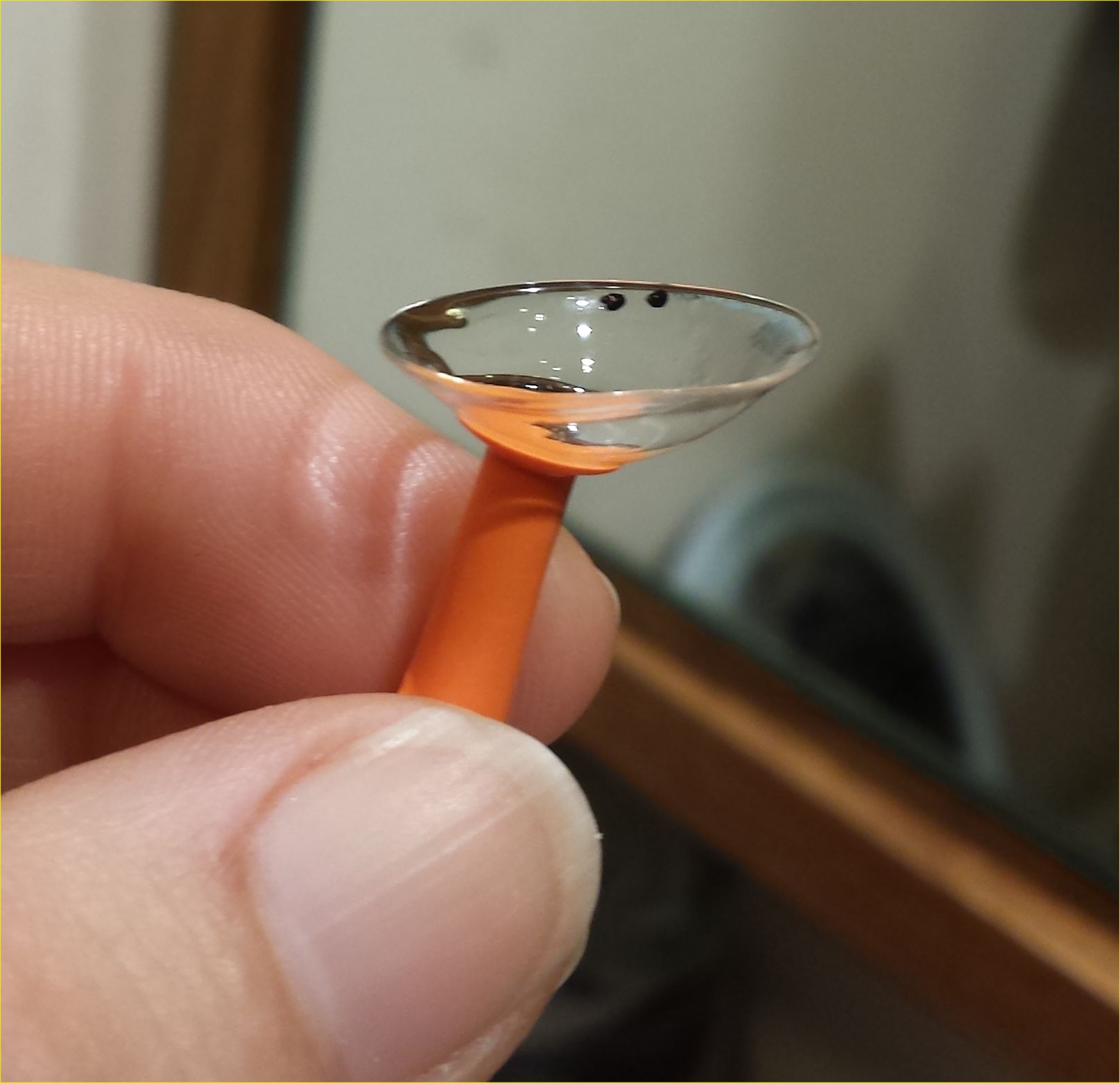Can You Wear Contacts With Astigmatism

Contacts are a great way to improve your vision without having to wear glasses. But what if you have astigmatism? Can you wear contacts with astigmatism? The answer is yes! In this article, we’ll discuss the types of contacts available for those with astigmatism, how they work, and how to choose the right pair for you.Yes, you can wear contacts with astigmatism. Specialized contact lenses, such as toric lenses, are designed to correct astigmatism and provide clear vision. Before wearing contacts for astigmatism, it is important to visit an eye care professional who can recommend the correct contact lens type for you.
Astigmatism
Astigmatism is a common vision condition that causes blurred vision due to an irregularly shaped cornea. It is caused by an imperfect curvature of the cornea or lens, resulting in distorted images being sent to the brain. People with astigmatism may experience blurred vision at all distances, whether near or far. Symptoms can include headaches, dizziness and eyestrain due to excessive squinting. Astigmatism can be corrected with eyeglasses, contact lenses, or refractive surgery such as LASIK. Other treatments such as orthokeratology (ortho-k) and ickelenses have been used to temporarily correct astigmatism while allowing the eyes to rest from corrective lenses during sleep.
Treatment for astigmatism depends on its severity and the individual’s lifestyle needs. For mild cases of astigmatism, eyeglasses may be sufficient for reducing symptoms of blurred vision and headaches. More severe cases may require specialty contact lenses or refractive surgery in order to correct the underlying shape of the cornea and restore clear vision.
Types of Astigmatism
Astigmatism is an eye condition in which the cornea or lens of the eye is irregularly shaped, resulting in blurred vision. This type of refractive error can affect one’s ability to see near and far objects clearly. Astigmatism is typically classified into three main types: regular astigmatism, irregular astigmatism, and mixed astigmatism.
Regular astigmatism is caused by a cornea or lens that is curved more in one direction than the other. It typically occurs when the eye has an oval shape, which causes light rays entering the eye to focus at two points rather than just one. This type of astigmatism can be corrected with glasses or contact lenses that have different powers in different meridians of the lens.
Irregular astigmatism occurs when the cornea or lens has an irregular shape, making it difficult for light to focus properly on the retina. This type of astigmatism cannot be corrected with glasses or contact lenses and usually requires laser surgery or other types of refractive surgery for correction.
Mixed astigmatism occurs when both regular and irregular astigmatisms are present in the same eye. This can cause vision problems such as double vision, ghosting, or halos around lights at night. Mixed astigmatisms are usually more difficult to correct than regular and irregular astigmatisms but can often be improved with glasses or contacts that contain multiple powers for different meridians of the lens.
Causes of Astigmatism
Astigmatism is an eye condition that causes blurred vision due to the irregular shape of the cornea or lens. It can affect people of all ages, but it is more common in children and adults who have certain risk factors. The most common causes of astigmatism include genetics, eye injury, and certain health conditions. In some cases, astigmatism can be caused by wearing eyeglasses or contact lenses that are not properly fitted.
Genetics is thought to be the primary cause of astigmatism. It can be inherited from a parent or develop over time due to environmental factors. People who have a family history of astigmatism are more likely to develop the condition than those without a family history.
Eye injury can also lead to astigmatism. This type of trauma can cause damage to the cornea or lens, resulting in an irregular shape that causes blurred vision. It is important to note that this type of astigmatism usually occurs suddenly and is not inherited from a parent or acquired over time through environmental factors.
Certain health conditions can also lead to astigmatism, such as diabetes and thyroid disease. These conditions can cause changes in the shape of the cornea or lens, resulting in blurred vision. Wearing glasses or contact lenses that are not properly fitted can also cause astigmatism by putting extra pressure on certain parts of the eye that alters its shape over time.
Symptoms of Astigmatism
Astigmatism is a common eye condition that causes blurred vision. It can impact people of all ages and is usually caused by an irregularly shaped cornea or lens. Symptoms of astigmatism include blurred vision at near and far distances, headaches, eye strain, squinting, and difficulty driving at night. Those with astigmatism may also experience dizziness, double vision, or difficulty focusing on one object.
Astigmatism can be diagnosed during a comprehensive eye exam. During the exam, your optometrist will check your eyes for signs of astigmatism and ask you questions about any symptoms you may be experiencing. Your optometrist will also measure your eyes to determine the degree of astigmatism you have.
Treatment for astigmatism usually includes eyeglasses or contact lenses to correct the refractive error in your eyes. In more severe cases, refractive surgery may be recommended to reshape the cornea and improve vision. Lifestyle changes such as reducing screen time or taking breaks throughout the day can also help reduce symptoms of astigmatism.

Diagnosis of Astigmatism
Astigmatism is an eye condition that affects your vision and can be diagnosed by your eye care professional. It occurs when the cornea, or the front surface of your eye, is not evenly curved. This causes light to be focused improperly on the retina, resulting in blurred vision. The most common symptom of astigmatism is blurred vision at all distances. Other signs include headaches, eyestrain, squinting to see clearly and fatigue after prolonged reading or other activities that require close focus.
Your eye doctor can diagnose astigmatism during a comprehensive eye exam with a refraction test. This test measures how your eyes focus light and helps determine what type of corrective lenses are needed to correct your vision. The doctor will also use various diagnostic instruments to measure the shape and curvature of your cornea and evaluate the amount of astigmatism present. In addition to these tests, your doctor may also perform a retinoscopy or computerized tomography (CT) scan to further evaluate the condition.
If you are diagnosed with astigmatism, your doctor may prescribe glasses or contact lenses to correct it. The type prescribed will depend on the degree of astigmatism present and how it affects your vision. Surgery may also be recommended if glasses and contacts do not provide adequate relief from symptoms. Your eye doctor will discuss all available options with you so that you can make an informed decision about which treatment option is best for you.
Pros of Contact Lenses for Astigmatism
Contact lenses for astigmatism are an excellent choice for those dealing with astigmatism-related vision issues. They provide a clear, uninterrupted view of the world, and they also allow you to adjust your vision as needed. Other benefits of contact lenses for astigmatism include a wider field of view, improved comfort, and the ability to correct both nearsightedness and farsightedness. Additionally, contact lenses come in various sizes and shapes to accommodate different eye shapes. This is especially important for those with astigmatism who may need a more specialized lens.
Cons of Contact Lenses for Astigmatism
Despite the advantages contact lenses offer for those with astigmatism, there are some drawbacks that should be considered before investing in them. For instance, contact lenses can be expensive—especially if you need specialty lenses or other modifications. Additionally, contact lenses require regular cleaning and maintenance which can be time consuming. Furthermore, contact lenses can also increase the risk of eye infection if they are not handled or stored properly. Finally, contacts may cause dry eyes or other discomfort if they are not fitted properly by an optometrist or ophthalmologist.
What to Consider Before Wearing Contacts With Astigmatism
Wearing contacts with astigmatism requires careful consideration and evaluation of the risks and benefits. Before making the decision to wear contacts, it is important to discuss your options with your eye doctor. It is also important to understand the potential risks associated with wearing contacts for astigmatism, as well as how best to care for them in order to prevent any problems or complications.
One of the most important considerations when deciding whether to wear contacts for astigmatism is whether your eyes are healthy enough for contact lenses. The health of your eyes should be evaluated by an eye doctor prior to wearing contact lenses, as certain conditions may make wearing contact lenses more risky or uncomfortable. For example, if you have dry eye syndrome or keratoconus, wearing contacts may cause further irritation and discomfort.
Another factor to consider before wearing contacts with astigmatism is the type of lens that will work best for you. There are several types of lenses available that can help correct astigmatism, including toric lenses, multifocal lenses, and hybrid lenses. Your eye doctor can help you select the right lens for your needs and lifestyle. Additionally, it is important to follow all instructions provided by your eye doctor when selecting and caring for your contact lenses in order to reduce the risk of infection or injury.
Finally, it is also important to consider the cost of contact lenses and any additional supplies you may need in order to care for them properly. Contact lens solutions can be expensive, but there are discount options available if you do some research online or at local retailers. Additionally, many insurance plans provide coverage for some or all of the cost associated with purchasing contact lenses and accessories.
In conclusion, there are a number of factors that should be taken into consideration before deciding whether or not to wear contacts with astigmatism. Your eye doctor can provide valuable insight into which type of lens will work best for you as well as any potential risks associated with wearing contact lenses. Additionally, it is important to take into account the cost associated with purchasing and caring for contact lenses in order to ensure that they are a viable option financially.

Conclusion
If you have astigmatism, you can definitely wear contact lenses. In fact, contacts are one of the best ways to correct astigmatism. It’s important to work with an experienced eye care professional who can help you find the right lenses and can guide you through the process of how to wear and care for them properly. With the right contact lenses, astigmatism does not have to interfere with your vision and lifestyle.
It’s also important to remember that contact lenses are a medical device and should never be used without a prescription from an eye care professional. Wearing contacts without a prescription or proper instructions could cause serious damage to your eyes. With proper instructions and supervision, however, you can enjoy clear vision and good ocular health with contact lenses.
